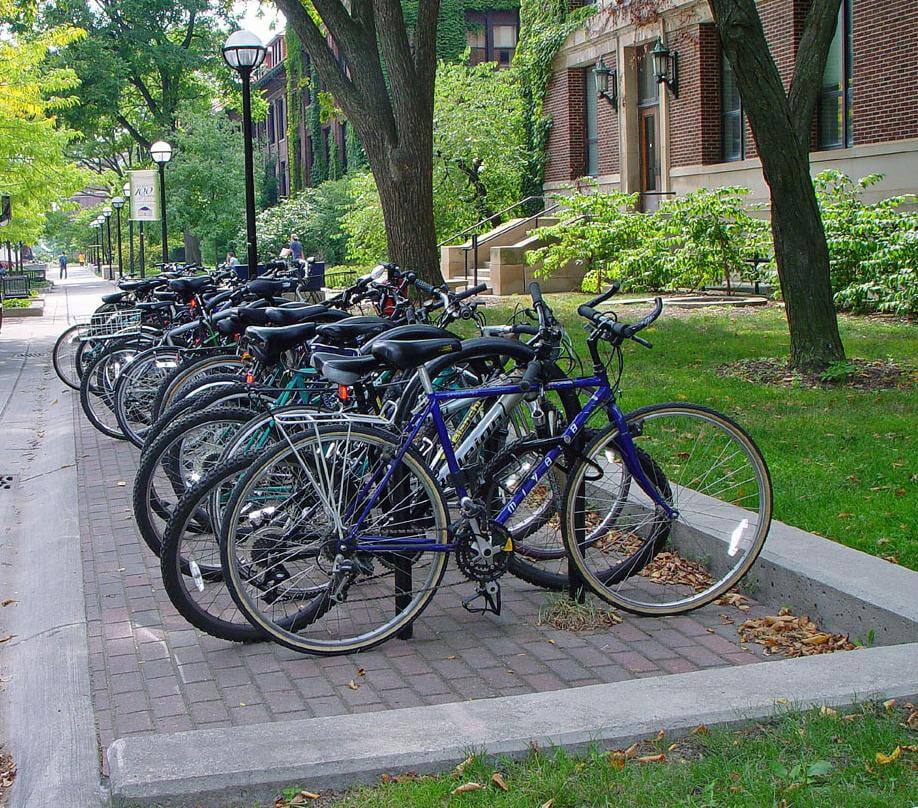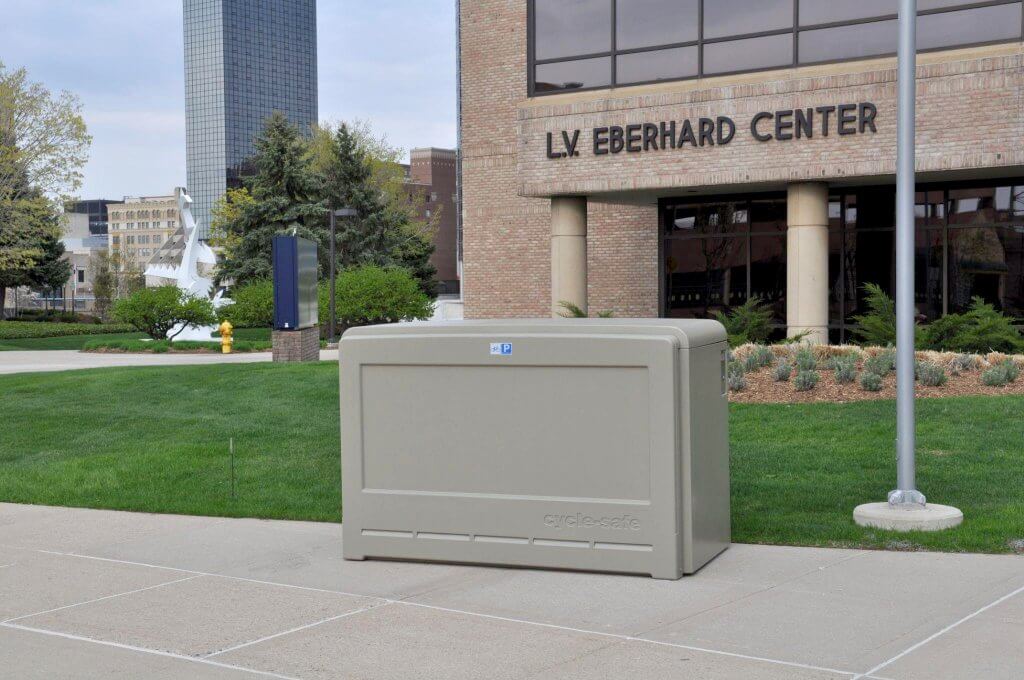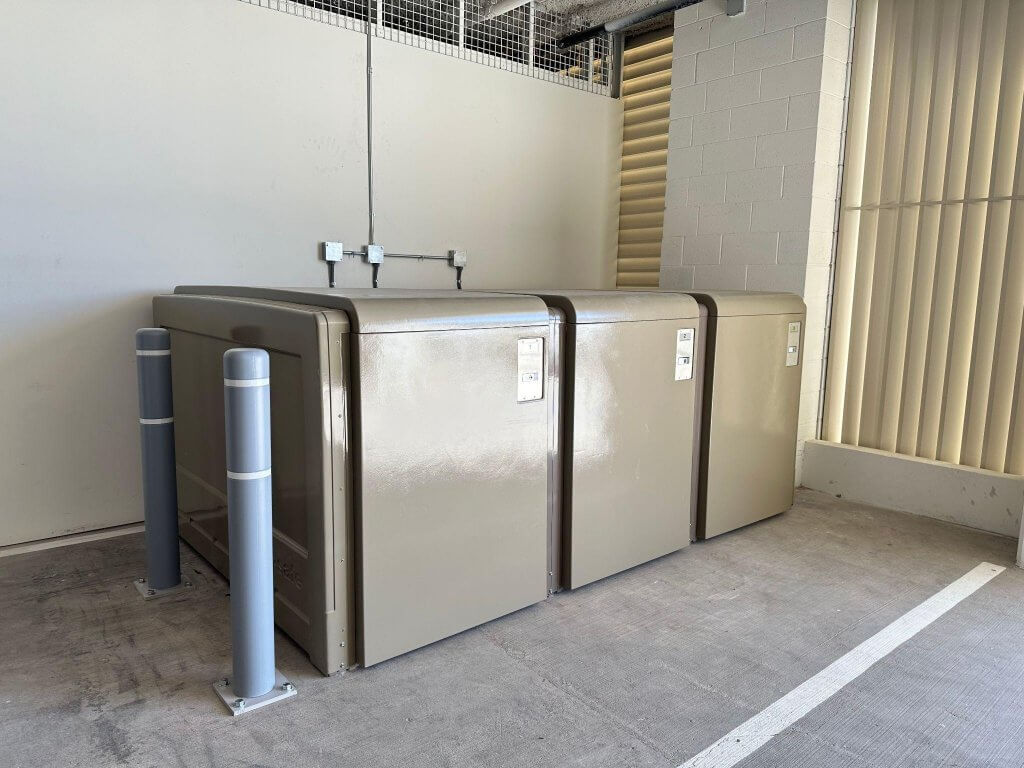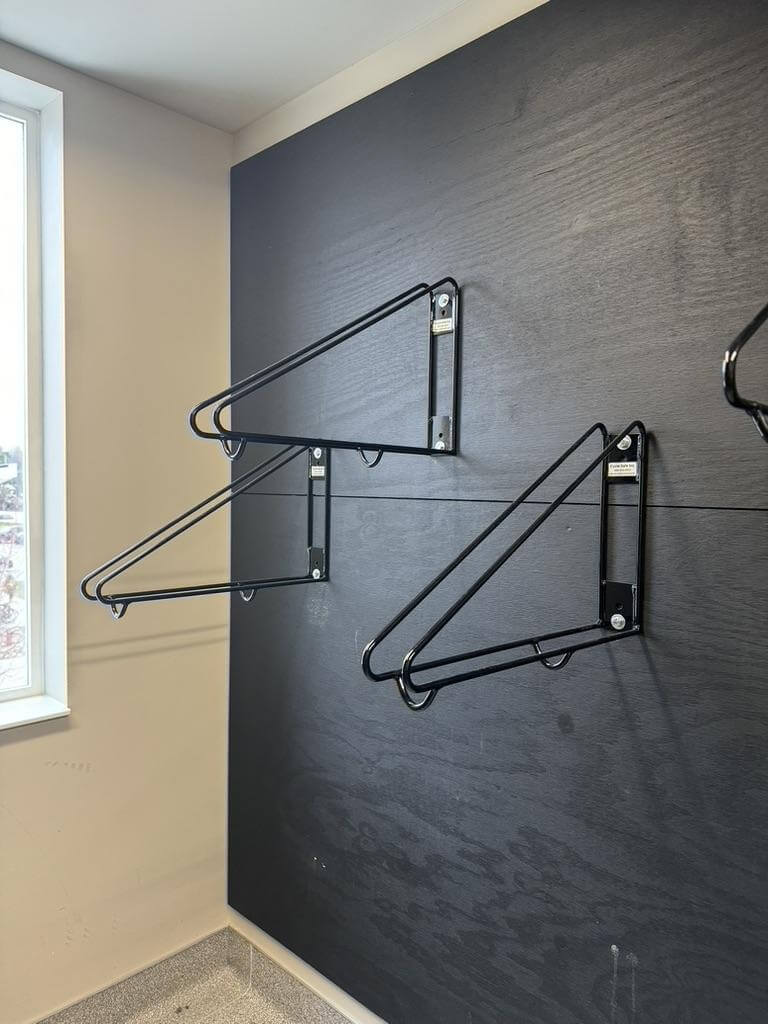
Walk across almost any college campus and you’ll see the same signs: handlebars poking out of overcrowded racks, bikes chained to fences, scooters leaned against stairwells, and, more often than anyone wants to admit, eBike batteries being charged in dorm rooms.
The rise of micromobility has changed how students move, and it’s happening faster than many institutions are prepared for. Bikes and eBikes aren’t just optional anymore. For many students, especially on large or commuter-heavy campuses, they’re essential. But when infrastructure doesn’t keep pace, it puts pressure on everything from safety and compliance to sustainability and campus culture.
At CycleSafe, we believe campuses—and students—deserve better, and we’ve spent decades helping them discover innovative solutions to get there. We help colleges and universities rethink their bike parking systems from the ground up, designing solutions that are secure, scalable, safe, and built to reflect real student behavior. Whether it’s secure fire-safe charging bike lockers, custom layouts for tight footprints, or durable solutions that stand up to winter salt and rain, we’ve helped campuses of all sizes modernize their campus mobility with confidence.

In our work with higher education institutions worldwide, we’ve identified the most pressing challenges and the strategies that are helping them stay ahead.
Why Smart Bike Parking Matters More Than Ever
Campus leaders are rethinking the role of bike parking, and for good reason. What once may have been considered a routine part of campus operations now plays a central role in how students safely and reliably get around. With more students relying on bikes and eBikes than ever before, campus parking infrastructure has become more than a convenience. It’s about equity, access, safety, and meeting the expectations of a new generation of riders.
Bike parking now touches everything from campus safety planning to long-term sustainability goals. It influences how students experience their daily commute, how safe they feel leaving their equipment behind, and how likely they are to make biking a primary mode of transportation.
As micromobility becomes essential to the student experience, institutions are under growing pressure to:
- Deliver reliable, bike- and eBike-friendly infrastructure that keeps up with usage
- Create campus environments that are walkable, rideable, and student-centered
- Reduce car dependency and meet aggressive climate action commitments
Well-designed bike parking meets these goals and moves the whole campus forward. It makes the choice to ride a bike, e-bike, or scooter simple and obvious, while sending a clear message: active transportation is part of the plan.
New Challenges Facing Campuses
As more students embrace bikes and eBikes as their go-to way to get around campus, the gaps in legacy infrastructure become harder to ignore. Many universities are now facing a wave of compounding challenges, including:
- Theft and vandalism – Overcrowded or poorly placed racks lead to bikes locked in exposed areas or high-traffic walkways, increasing the risk of damage and theft.
- Lack of data-driven placement – Without strategic planning, some racks sit empty while others are packed beyond capacity, creating both frustration and safety concerns.
- Unsafe storage practices – With no designated space to store or charge eBikes, students are bringing batteries indoors, sometimes plugging them into extension cords in dorm rooms, significantly raising fire and liability risks.
- Lack of long-term storage – Students who leave for summer break or study abroad often have nowhere secure to store their bikes, leading to abandoned bikes and enforcement headaches for staff.
- Turnover – Student populations turn over to a new audience every 4 years, making consistent education and innovations necessary, as well as managing leftover/forgotten bikes post graduation.
Each of these problems makes biking a less attractive option, undermining campus goals around safety, sustainability, and student satisfaction. And perhaps most frustrating of all, many of these issues aren’t due to a lack of interest or budget. They’re the result of outdated layouts, limited awareness from the correct parties, and a lack of strategic guidance.
Fortunately, with the right tools and planning, these campus bike parking challenges are solvable. And the first step is acknowledging that bike parking can no longer be thought of as a side project or afterthought. It’s a critical piece of campus infrastructure that deserves the same care and foresight as any other mobility or safety initiative.
Just Some of the Universities that Rely on CycleSafe

























eBike Safety & Storage: A Growing Concern
There’s no getting around it: lithium-ion batteries pose real risks on college campuses. As eBikes become more popular on campuses, so do the safety concerns that come with improper charging and storage. News stories about dorm fires should be wake-up calls to campus leaders.
The core issue is infrastructure. When campuses don’t offer designated fast and easy-to-use charging areas or outdoor lockers, students are forced to improvise. That means bringing bikes into dorm rooms, plugging chargers into extension cords, charging batteries unattended, and without safeguards. These things, particularly when done over a long break away from campus, aren’t just against school policies; they are downright dangerous.
For many students, an eBike is the only practical way to get to class, work, extracurriculars, or just spend time with friends. If schools want to encourage sustainable, active transportation, they need to make it the safe and obvious first choice. So, solving this problem requires more than adding new rules to the student handbook. Safe ebike storage takes creative solutions and innovative designs.
For universities looking to stay ahead of the curve, eBike safety is no longer optional. Battery-safe lockers with GFCI outlets and self-extinguishing materials can mitigate fire risk. Clear signage and campus-wide education can guide students toward safer behavior. Integrating storage solutions into campus planning from the start, with student behavior in mind, ensures safety doesn’t come as an afterthought and is easily adapted by the student population.

Designing for Compliance & Student Behavior
Most students aren’t trying to break the rules. They’re simply navigating their environment in the way that follows a path of least resistance. When bike parking is inconvenient, hard to find, or feels unsafe, they look for workarounds, like locking bikes to railings, stairwells, or whatever is closest to the door.
That’s why infrastructure design matters. Campuses that make it easy to do the right thing see far greater compliance. This means placing racks and bike lockers where students naturally travel, ensuring they’re visible and well-lit, and avoiding layouts that feel confusing or inaccessible. It also means thinking through the entire parking experience, from signage and pathfinding to shelter and security.
If the campus infrastructure aligns with students’ habits and incentives, you don’t have to rely on enforcement. Compliance becomes the default.

Emerging Trends in Campus Bike Parking
Forward-thinking campuses are setting the standard for what modern bike parking can look like. Here are several key trends that are reshaping how institutions plan, build, and maintain mobility infrastructure:
- Smart bike parking systems – App-enabled lockers are making bike storage more flexible and secure. Students can reserve space on demand, reducing clutter and improving the user experience while giving you the data to understand traffic flow of parking needs.
- Inclusive storage for all riders – The rise in cargo bikes, adaptive cycles, and scooters means campuses need parking that supports a wider range of mobility devices. Horizontal and vertical rack combinations, bike shelters, bike rooms, all of which have ADA-conscious layouts, are becoming the norm.
- All-season durability – Bike parking must be usable and safe year-round. In cold, rainy, or coastal climates, shelters, corrosion-resistant materials, and weather-rated finishes help extend the lifespan and usability of infrastructure.
- Student input and engagement – Planners are increasingly involving students in the design process, from surveys and pilot programs to design feedback. This collaboration ensures infrastructure meets real needs, not just assumptions.
- Integration with sustainability and transit goals – Modern bike parking is being designed as part of larger conversations about mode shift, land use planning, and carbon reduction. Infrastructure that encourages biking supports broader campus values around environmental responsibility and active living.
As these trends evolve, there is an opportunity to lead. Campuses that embrace these shifts are better positioned to support students today and plan wisely for the future. Schools recognized by the League of American Bicyclists as Bicycle Friendly Universities are already setting that bar, proving that strategic investment in bike infrastructure has long-term benefits for access, sustainability, and student life.

Planning for the Future with CycleSafe
The future of campus mobility is unfolding right now. With student transportation needs evolving rapidly and safety concerns growing more complex, the time for reactive fixes has passed. Bike parking must be approached with the same strategic care as other core infrastructure, and that starts with partners who understand both the challenges and the solutions.
At CycleSafe, we don’t just supply bike parking products. We collaborate with planners, facility managers, and architects to design systems that work for real campuses, real students, and real-world conditions. Our approach is grounded in decades of experience and informed by continuous innovation.
If you’re ready to upgrade your campus bike infrastructure, or even just start the conversation, our team is here to help. Start building the campus you’ve been planning for.
